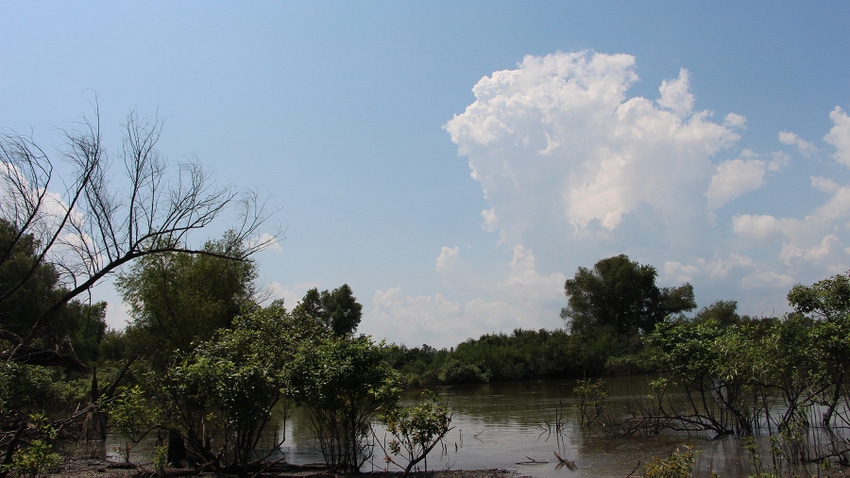August 7, 2023

The Supreme Court’s 9-0 ruling for the plaintiffs in the Sackett vs. EPA case might seem to be the final word in the lengthy and, oftentimes, politically charged debate over what’s included in the term “Waters of the United States.”
While farmers and landowners may have hoped the Court’s May 25 decision would bring an end to the uncertainty over what is included in the definition of navigable waters, those expectations may prove to be a bit rosy.
“I think there is some hope the Supreme Court’s decision in Sackett would be the nail in the coffin and give us our final definition of Waters of the United States,” said Brigit Rollins, staff attorney with the National Agricultural Law Center, “but I think that’s a little bit of an optimistic hope.
“It would be nice if we could all get off this WOTUS roller coaster, but I think there’s still a lot that could happen,” she said, speaking during the second of three webinars planned by the National Agricultural Law Center on the Waters of the U.S. debate. The second webinar was held on July 19.
Plurality decision
In this latest ruling, the majority on the court agreed with the plurality decision in Rapanos vs. U.S., which said that to be considered “Waters of the U.S.” a wetland must share a “continuous surface connection” with a recognized WOTUS.
In the 2006 Rapanos case, a concurring opinion by Justice Anthony Kennedy said a wetland could be considered Waters of the U.S. if it possessed a “significant nexus” to a recognized WOTUS. Since the 4-0 plurality vote in Rapanos was not a majority, Justice Kennedy’s significant nexus definition became the determining factor until it was overturned in the Sackett decision.
EPA’s response to the recent ruling has been “somewhat minimal,” according to Rollins. That’s in contrast to that by representatives of environmental groups, including the National Resources Defense Council:
“Unfortunately, the majority of the justices used the case as a tool for dramatically weakening the Clean Water Act – by deciding for themselves, without any scientific support whatsoever, what wetlands deserve protection from pollution and destruction,” said the NRDC’s Jeff Turrentine, a senior writer for the Council.
WOTUS interpretation
Shortly after the decision, EPA released a statement that it would interpret WOTUS consistently with the ruling in Sackett. Later, it announced it would issue a final rule by Sept. 1 to bring its 2023 WOTUS rule in line with the new decision.
“There aren’t a lot of details about this so far,” said Rollins, “but it seems like they intend to revise the 2023 rule instead of scrapping it and starting over. I think that’s to be expected given that they just carried out a full rulemaking procedure.”
The Waters Advocacy Coalition, which represents 45 groups including the American Farm Bureau Federation, major commodity and other business, energy and mining associations, disagrees, issuing a statement criticizing that approach by EPA and the U.S. Army Corps of Engineers, which also is charged with administering the Clean Water Act.
“EPA and the Corps have stated they intend to issue a final rule by Sept. 1 that amends the Biden WOTUS rule to ensure consistency with the decision in Sackett,” the statement said. “Based on this truncated rulemaking timeline, it appears the agencies will forego public comment and simply strike language from the rule related to the significant nexus test and the definition of adjacent, while reinforcing the Agencies’ interpretation of the ‘relatively permanent’ test set forth in the preamble.”
Concurring opinions
While the nine members of the court agreed the Sacketts had not violated the Clean Water Act, two justices wrote concurring opinions that could be fodder for future arguments over the definition of WOTUS.
Justice Elena Kagan said she would have taken a broader approach to including wetlands in the waters of the U.S. “Her concurrence is the closest to a dissent in this opinion,” said Rollins. “If you’re looking for that that would be the one to look at it. Then, Justice Brett Kavanaugh wrote his own concurrence, which I think is actually very interesting.”
Kavanaugh wrote that adjacent should include neighboring and nearby wetlands, arguing this had been the standard definition of adjacency since the Clean Water Act was passed by Congress in 1972.
“He also raised questions that could be prescient going forward about what happens to those wetlands that would share a continuous surface water connection with a navigable water if not for manmade or natural barriers,” she said.
“He specifically referenced wetland systems along the banks of the Mississippi River that would share a continuous surface connection with the Mississippi except the Corps of Engineers has put in a system of levees for flood control.”
Enforcement stopped
Then, there are the three lawsuits filed after EPA released its new WOTUS rule at the start of 2023. Taken together, judges hearing the cases have stopped enforcement of the 2023 rule in 28 states.
“These cases weren’t dismissed or officially resolved which means that after EPA releases its final rule on Sept. 1, these cases could become unpaused,” she noted. “And it’s possible the plaintiffs will have additional concerns about the definition of WOTUS that have not been resolved. So there might be further litigation in all three of these cases.”
Rollins said participants should also remember the Sackett decision only applies to the federal Clean Water Act and not to state laws. “A variety of states have laws in place that regulate discharges of pollutants into wetlands. California, for example, has a robust program regulating discharges of dredged or fill material into interstate waters and wetlands.
“And there are other federal laws that impose limitations. If you are someone trying to comply with the Swampbuster provisions, the Sackett case does not mean you can fill in that designated wetland on your property.”
About the Author(s)
You May Also Like






